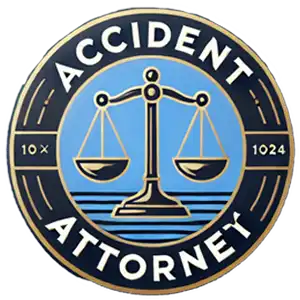Accident claims can feel complex and intimidating, especially if you’re unfamiliar with the process. Understanding the legal steps involved in accident claims is crucial to effectively protecting your rights and maximizing your compensation. Here’s an essential guide on navigating accident claims:
Step 1: Initial Reporting
After an accident, your immediate step is reporting it to the appropriate authorities and your insurance company. Filing timely and accurate reports sets the foundation for a successful claim.
Step 2: Investigation and Evidence Gathering
Thoroughly collecting and preserving evidence is vital. Take photographs, obtain witness statements, secure police reports, and document your injuries. This evidence directly supports your claim’s legitimacy and value.
Step 3: Medical Treatment and Documentation
Seek immediate medical attention, even if you initially feel fine. Consistent medical treatment and documentation not only safeguard your health but provide crucial evidence of the extent and impact of your injuries.
Step 4: Insurance Claim Filing
Filing an insurance claim involves formally notifying your insurer and providing all necessary evidence and documentation. Clearly communicate the details without admitting liability to ensure your claim is processed effectively.
Step 5: Negotiation with Insurance Companies
Insurance companies typically begin negotiations by offering a low initial settlement. Understanding your claim’s true value helps you negotiate effectively, ensuring your compensation fully covers all damages and future costs.
Step 6: Legal Representation
An experienced accident attorney significantly strengthens your claim. Attorneys expertly handle insurance negotiations, accurately evaluate your claim’s worth, and manage legal complexities. Engaging legal support greatly enhances your compensation potential.
Step 7: Litigation (if necessary)
If negotiations fail to produce a fair settlement, pursuing litigation may be necessary. Understanding your right to file a lawsuit and how this process unfolds empowers you to confidently protect your interests.
Common Challenges in Accident Claims
- Disputed Liability: Insurers frequently dispute fault. Effective evidence gathering helps resolve liability issues clearly.
- Delayed Settlements: Insurance companies might delay claims processing intentionally. Legal representation accelerates this process and protects your rights.
- Underestimating Claim Value: Without professional evaluation, many underestimate their claim’s worth, resulting in inadequate settlements.
FAQs about Accident Claims
Q1: How long does an accident claim typically take?
A: Claim duration varies, typically ranging from a few months to over a year, depending on the complexity and negotiation process.
Q2: Do I always need a lawyer for my accident claim?
A: While not mandatory, hiring an attorney is strongly recommended to maximize compensation and effectively manage complex legal procedures.
Q3: What damages can I claim?
A: Damages typically include medical bills, lost wages, property damage, emotional distress, pain and suffering, and sometimes punitive damages.
Q4: How can I strengthen my accident claim?
A: Prompt medical care, thorough evidence gathering, accurate documentation, and professional legal assistance significantly strengthen your claim.
Additional Resources
- Refer to Insurance Information Institute’s guide for more on filing effective claims.
- Use American Bar Association’s legal resources for detailed legal insights.
- Consult the National Highway Traffic Safety Administration (NHTSA) for accident prevention and safety guidelines.
Final Thoughts
Understanding accident claims and the legal processes involved ensures you’re well-prepared and able to protect your rights effectively. Utilize this comprehensive guide and authoritative resources to navigate your claim successfully and secure the compensation you deserve.





